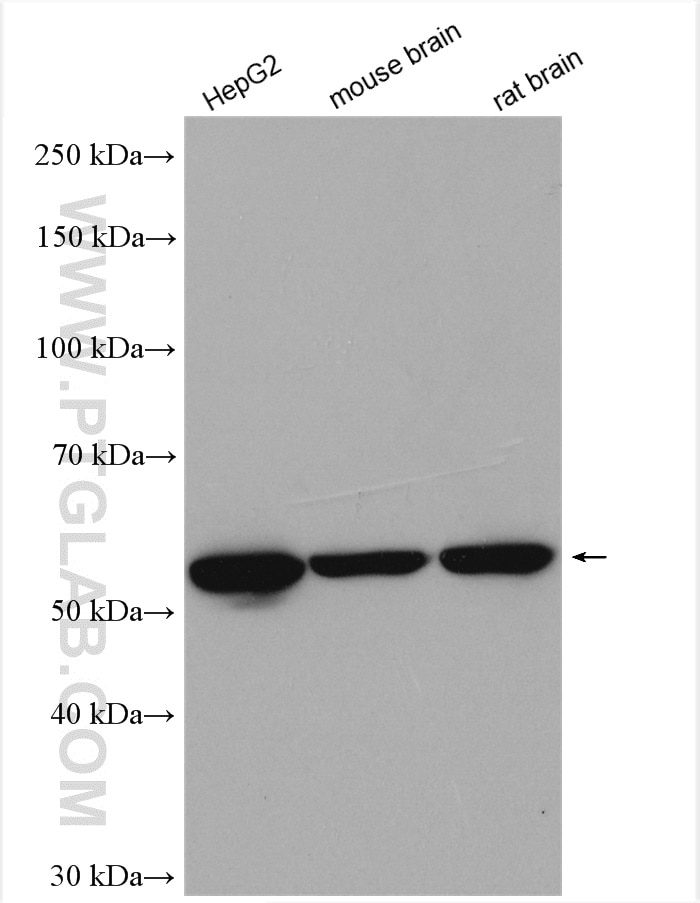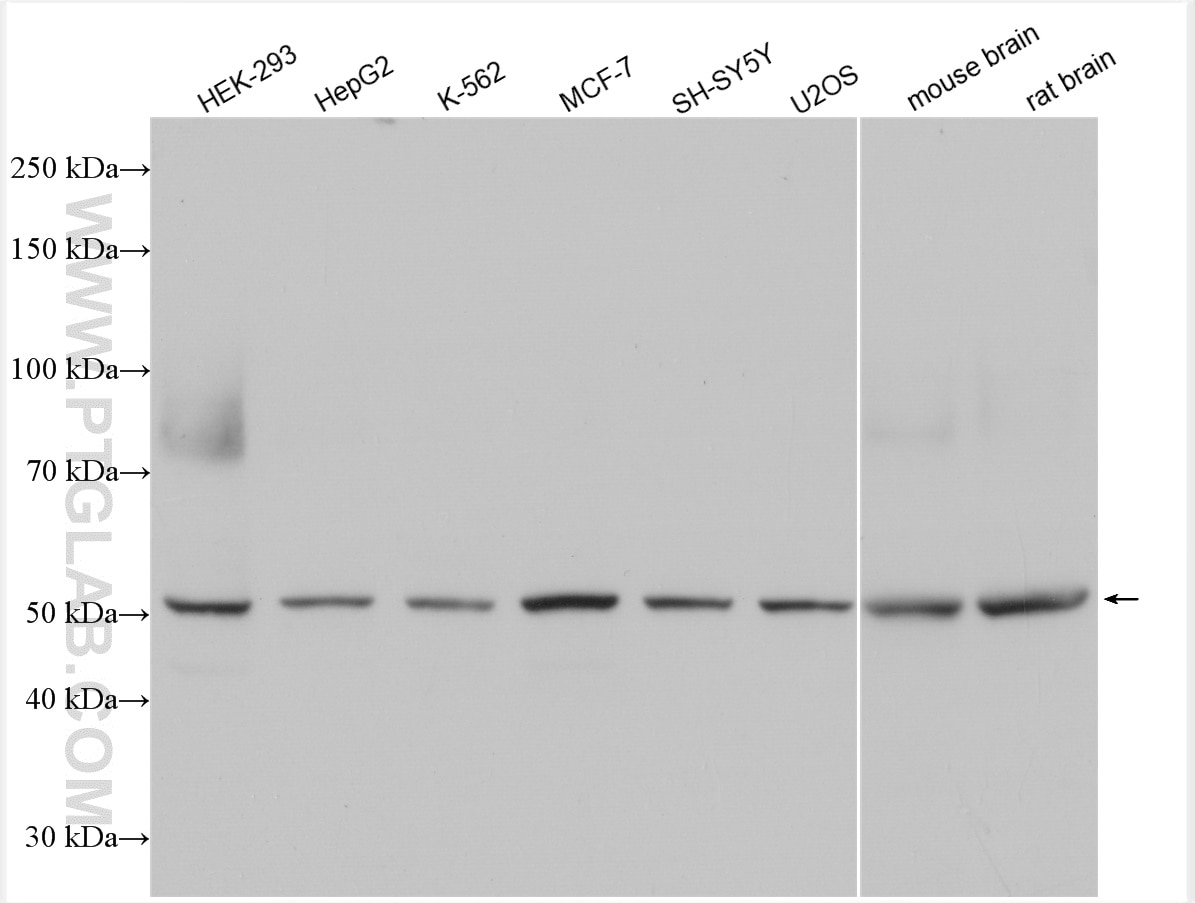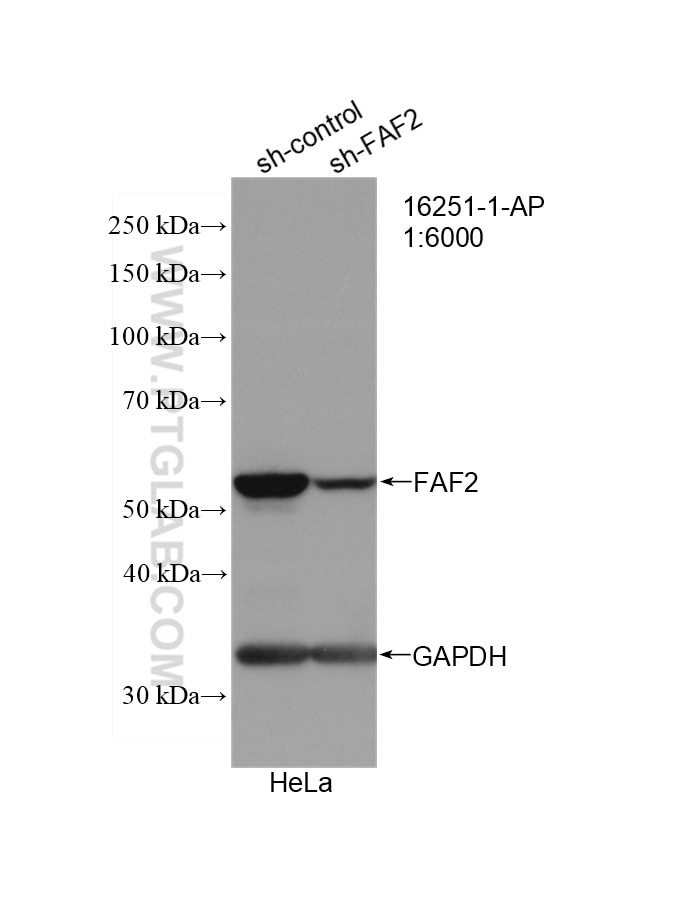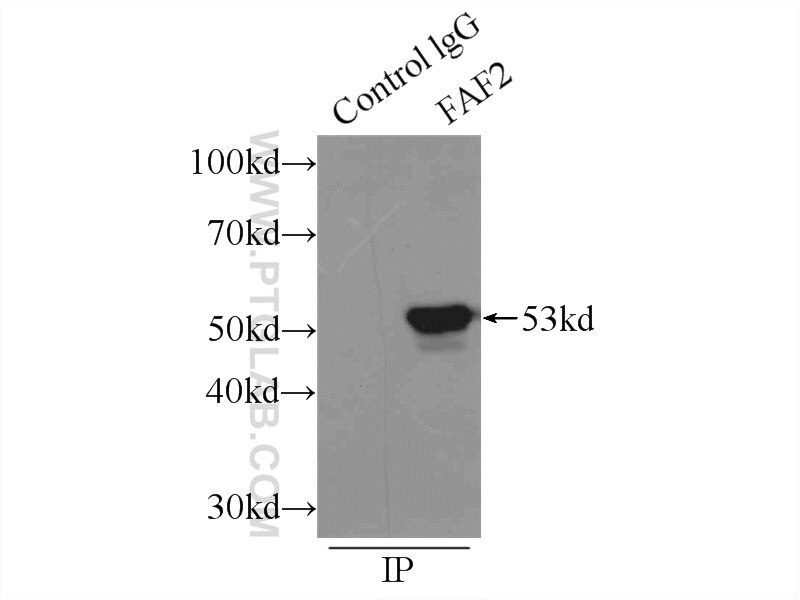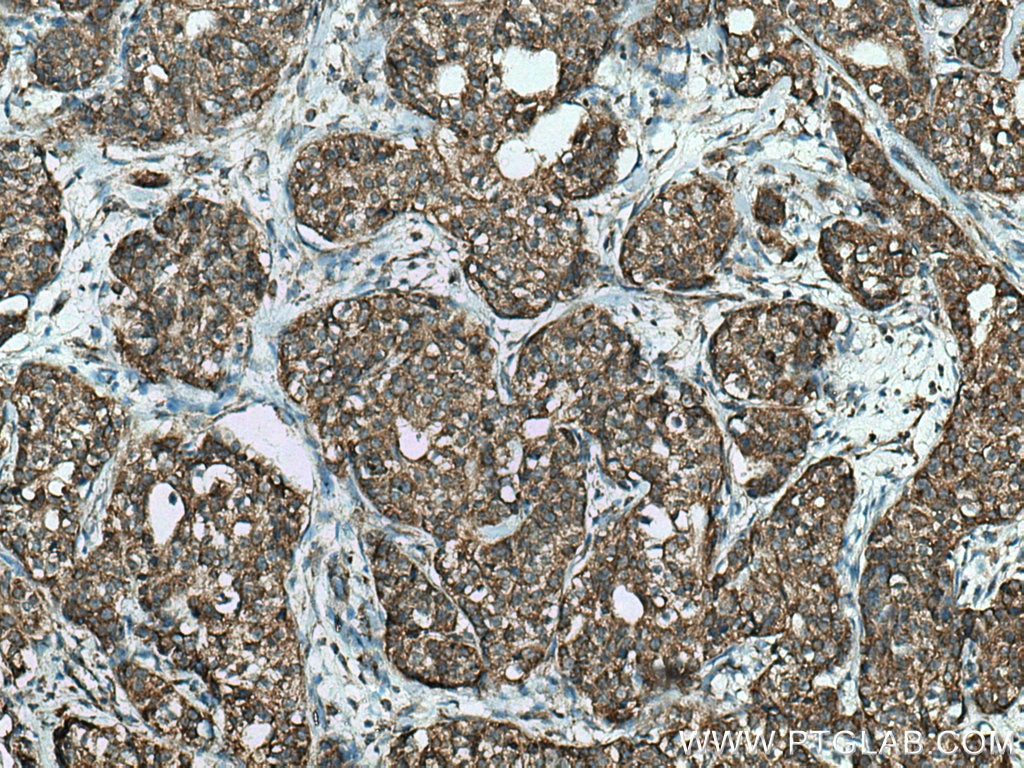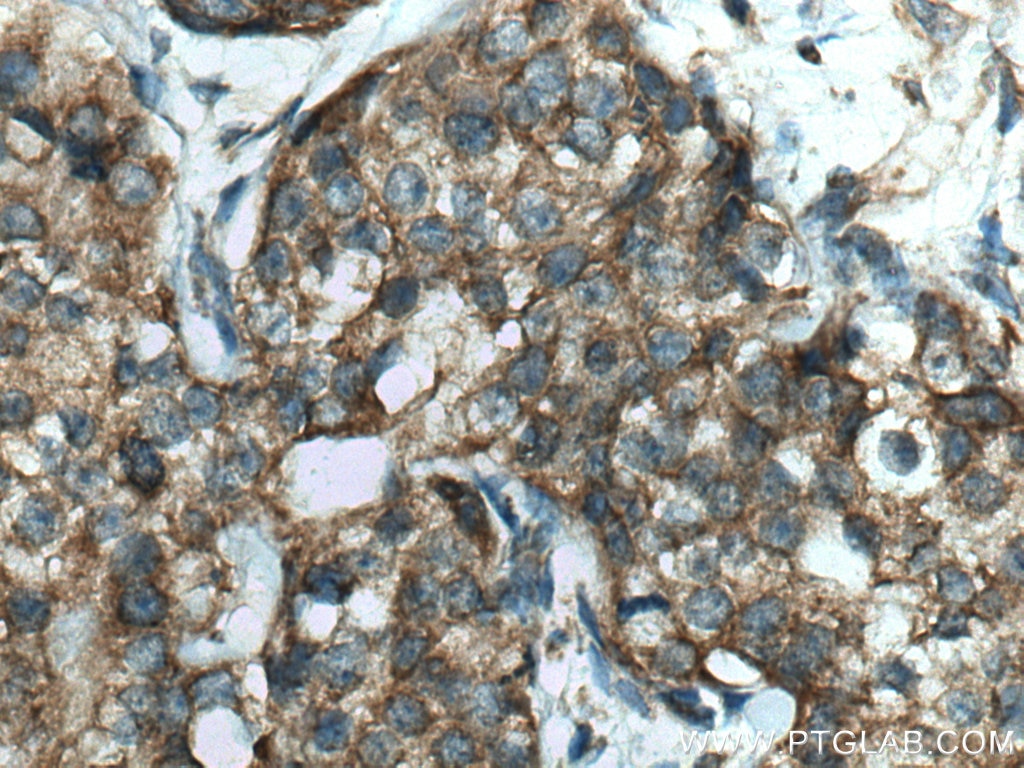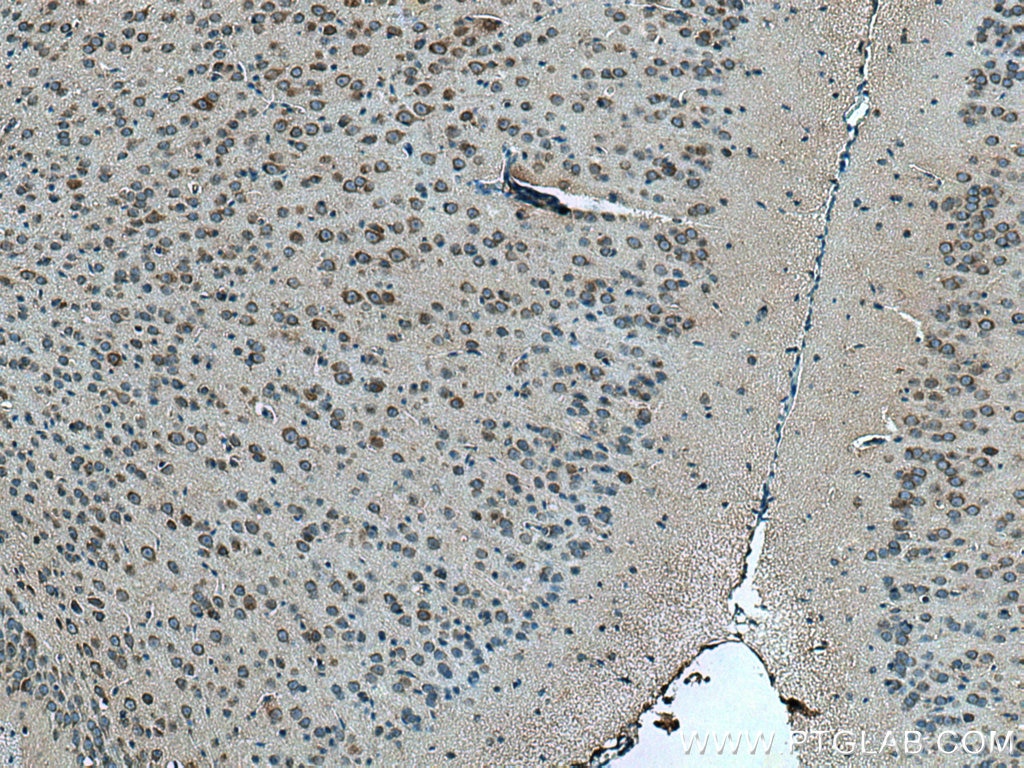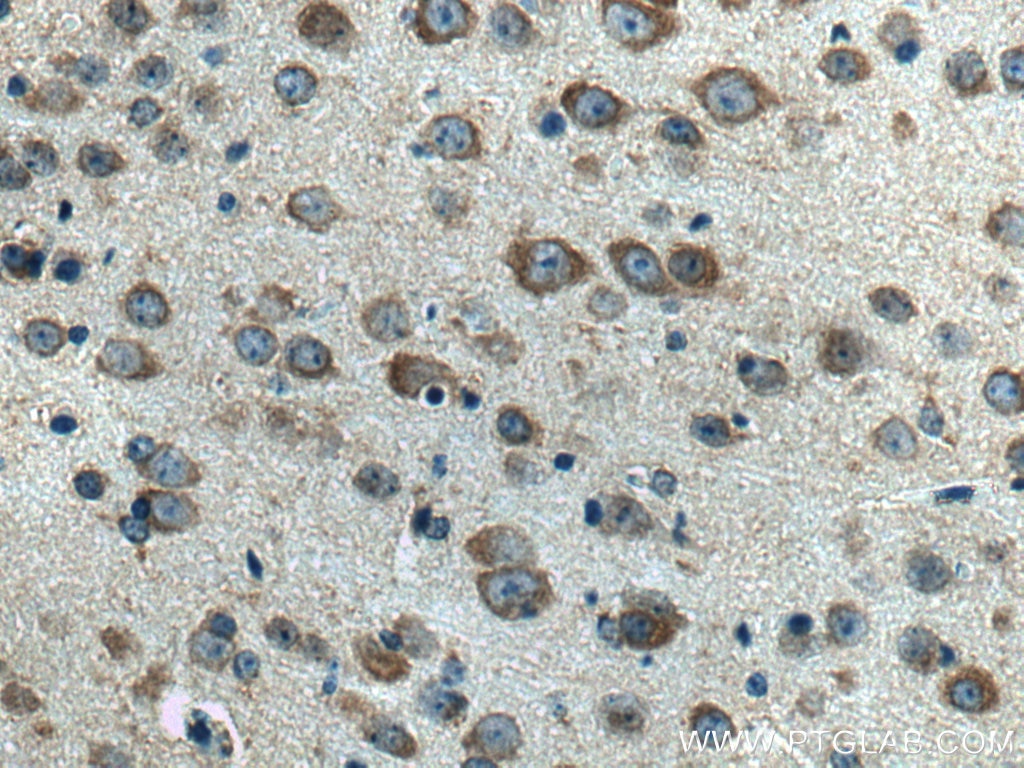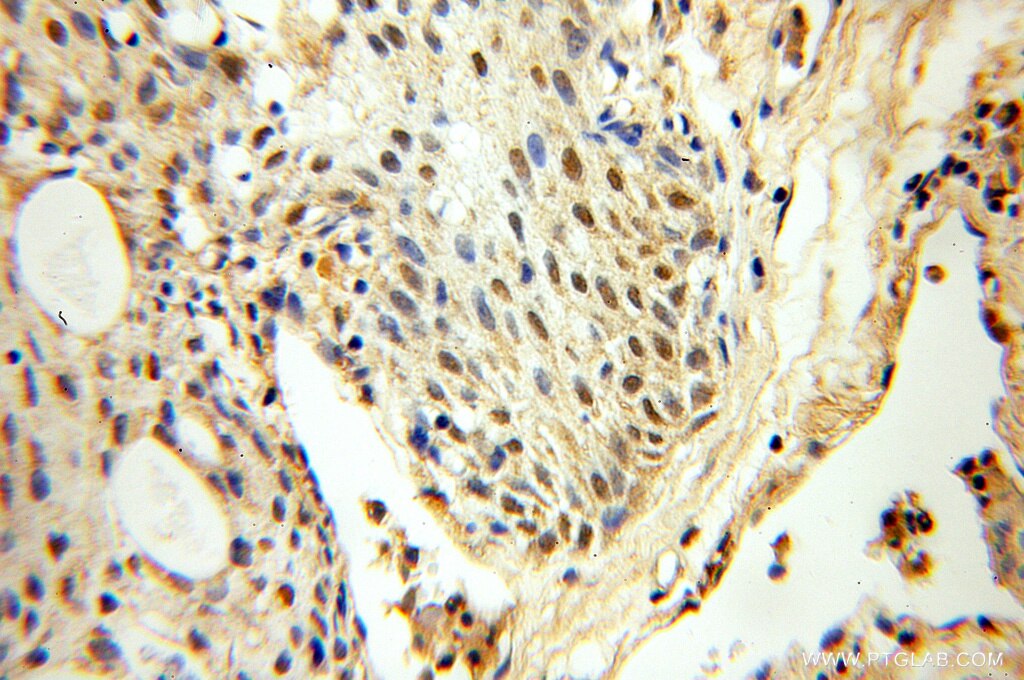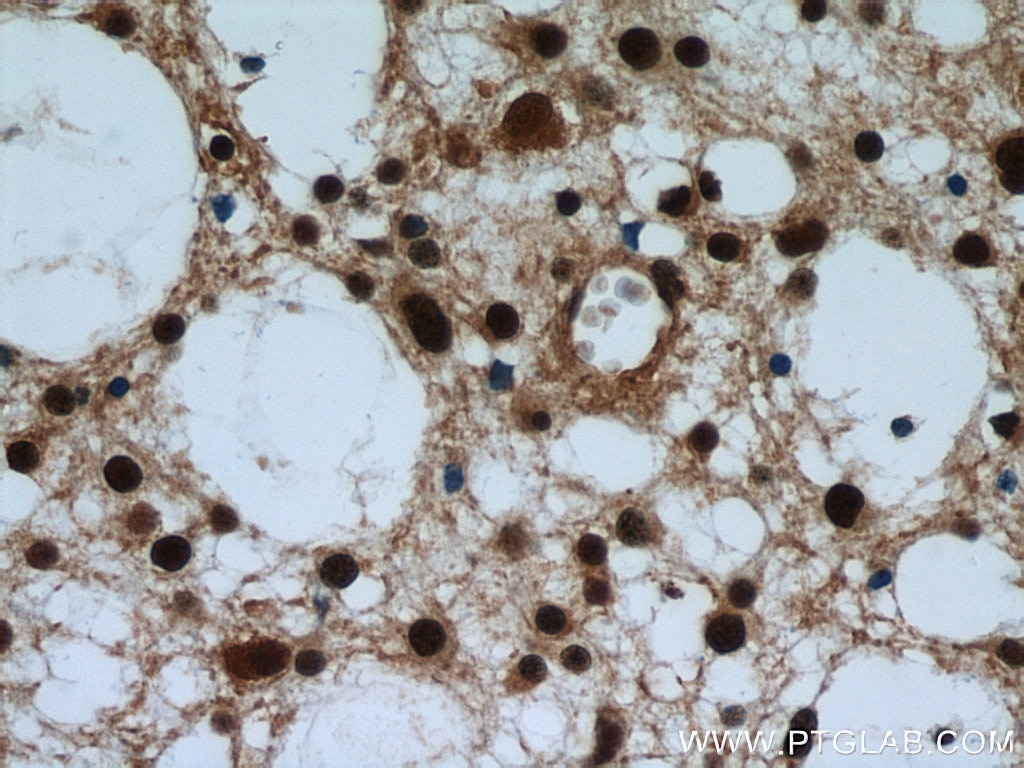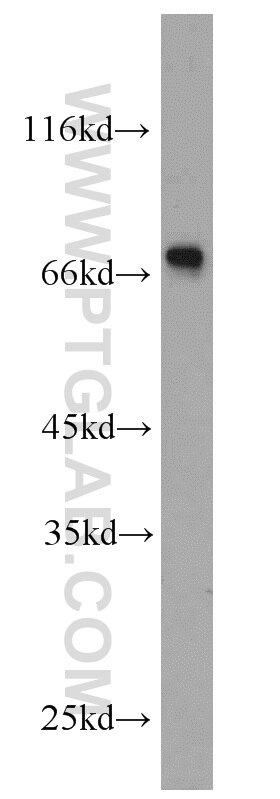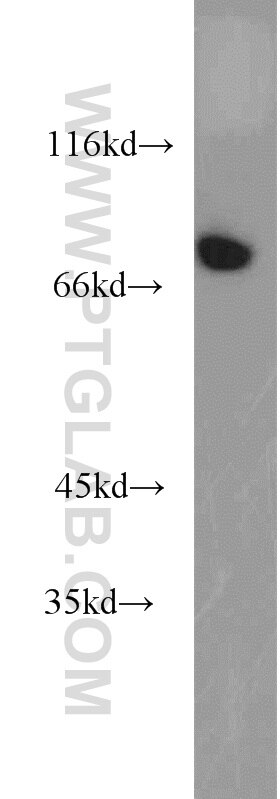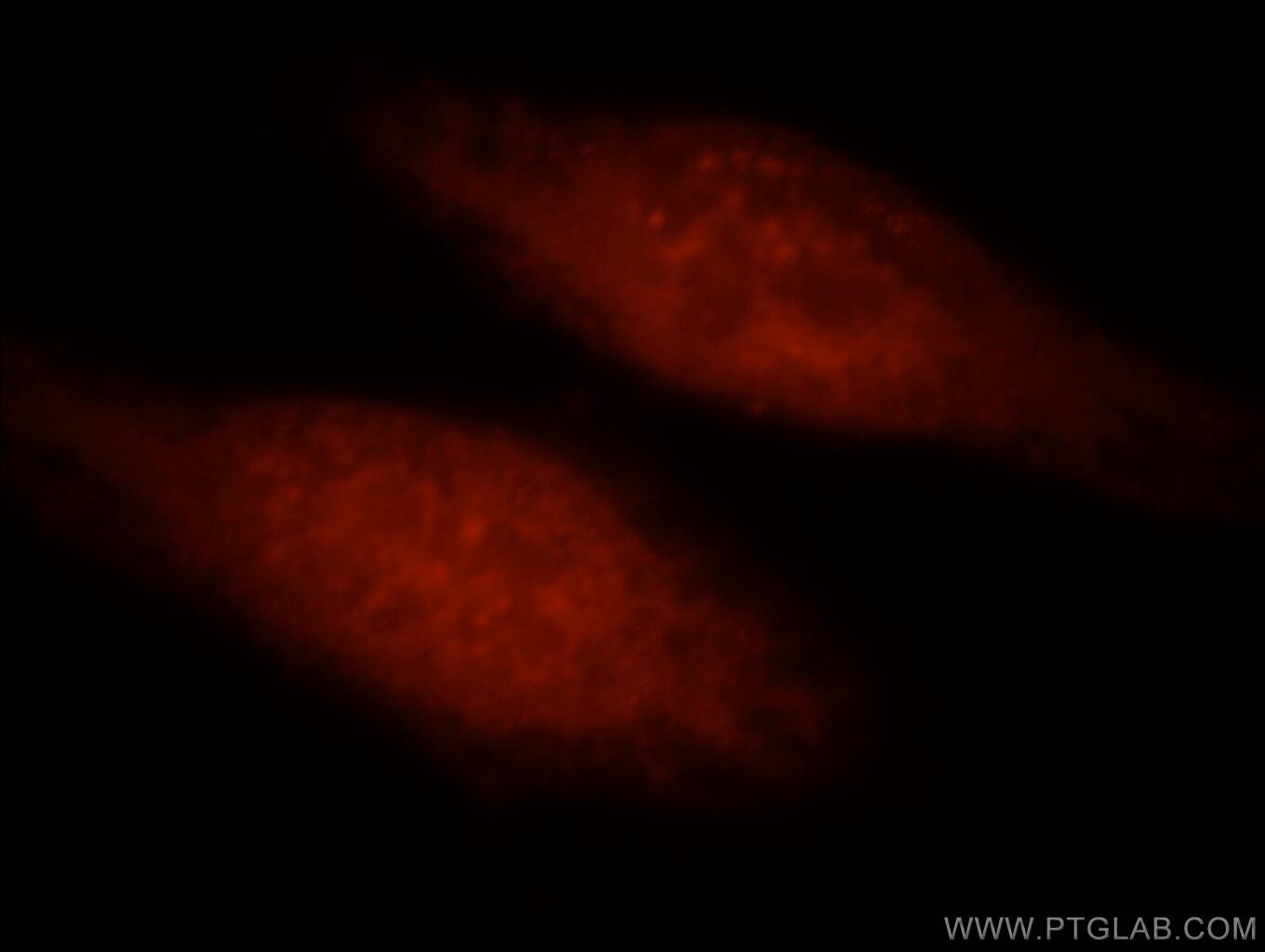- Phare
- Validé par KD/KO
Anticorps Polyclonal de lapin anti-FAF2
FAF2 Polyclonal Antibody for WB, IP, IHC, ELISA
Hôte / Isotype
Lapin / IgG
Réactivité testée
Humain, rat, souris et plus (1)
Applications
WB, IP, IF, IHC, ELISA
Conjugaison
Non conjugué
N° de cat : 16251-1-AP
Synonymes
Galerie de données de validation
Applications testées
| Résultats positifs en WB | cellules HEK-293, cellules HeLa, cellules HepG2, cellules K-562, cellules MCF-7, cellules SH-SY5Y, cellules U2OS, tissu cérébral de rat, tissu cérébral de souris |
| Résultats positifs en IP | tissu cérébral de souris |
| Résultats positifs en IHC | tissu de cancer du sein humain, tissu cérébral de souris il est suggéré de démasquer l'antigène avec un tampon de TE buffer pH 9.0; (*) À défaut, 'le démasquage de l'antigène peut être 'effectué avec un tampon citrate pH 6,0. |
Dilution recommandée
| Application | Dilution |
|---|---|
| Western Blot (WB) | WB : 1:1000-1:8000 |
| Immunoprécipitation (IP) | IP : 0.5-4.0 ug for 1.0-3.0 mg of total protein lysate |
| Immunohistochimie (IHC) | IHC : 1:50-1:500 |
| It is recommended that this reagent should be titrated in each testing system to obtain optimal results. | |
| Sample-dependent, check data in validation data gallery | |
Applications publiées
| WB | See 14 publications below |
| IF | See 4 publications below |
| IP | See 2 publications below |
Informations sur le produit
16251-1-AP cible FAF2 dans les applications de WB, IP, IF, IHC, ELISA et montre une réactivité avec des échantillons Humain, rat, souris
| Réactivité | Humain, rat, souris |
| Réactivité citée | bovin, Humain |
| Hôte / Isotype | Lapin / IgG |
| Clonalité | Polyclonal |
| Type | Anticorps |
| Immunogène | FAF2 Protéine recombinante Ag9236 |
| Nom complet | Fas associated factor family member 2 |
| Masse moléculaire calculée | 445 aa, 53 kDa |
| Poids moléculaire observé | 53 kDa |
| Numéro d’acquisition GenBank | BC014001 |
| Symbole du gène | FAF2 |
| Identification du gène (NCBI) | 23197 |
| Conjugaison | Non conjugué |
| Forme | Liquide |
| Méthode de purification | Purification par affinité contre l'antigène |
| Tampon de stockage | PBS avec azoture de sodium à 0,02 % et glycérol à 50 % pH 7,3 |
| Conditions de stockage | Stocker à -20°C. Stable pendant un an après l'expédition. L'aliquotage n'est pas nécessaire pour le stockage à -20oC Les 20ul contiennent 0,1% de BSA. |
Informations générales
Protein ETEA (FAF2, or UBXD8) is a homolog to Fas-associated factor 1 (FAF1), which is involved in Fas-mediated apoptosis. ETEA protein directly interacts with and negatively regulates neurofibromin. ETEA contains both UBA and UBX domains and overexpression of ETEA downregulates neurofibromin in human cells. It may play a role in the translocation of terminally misfolded proteins from the endoplasmic reticulum lumen to the cytoplasm and their degradation by the proteasome. ETEA is highly expressed in peripheral blood of patients with atopic dermatitis (AD) compared to normal individuals, and may regulate the resistance to apoptosis that is observed in T cells and eosinophils of AD patients.
Protocole
| Product Specific Protocols | |
|---|---|
| WB protocol for FAF2 antibody 16251-1-AP | Download protocol |
| IHC protocol for FAF2 antibody 16251-1-AP | Download protocol |
| IP protocol for FAF2 antibody 16251-1-AP | Download protocol |
| Standard Protocols | |
|---|---|
| Click here to view our Standard Protocols |
Publications
| Species | Application | Title |
|---|---|---|
Science Ubiquitination of G3BP1 mediates stress granule disassembly in a context-specific manner. | ||
Cell Rep hnRNPA2B1 represses the disassembly of arsenite-induced stress granules and is essential for male fertility | ||
Elife USP13 antagonizes gp78 to maintain functionality of a chaperone in ER-associated degradation. | ||
Elife Interaction mapping of endoplasmic reticulum ubiquitin ligases identifies modulators of innate immune signalling. | ||
J Biol Chem A Ubiquitin-like Domain Recruits an Oligomeric Chaperone to a Retrotranslocation Complex in Endoplasmic Reticulum-associated Degradation. | ||
J Biol Chem Characterization of the deubiquitinating activity of USP19 and its role in endoplasmic reticulum-associated degradation. |
